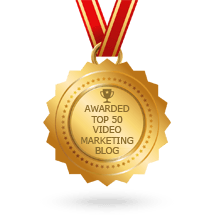To someone like me, born way back in the last century, millennials are a bit of a different breed. The fact that they have their own title and market segment probably says everything about how they have had a whole niche based around them. According to this article from the Metro, millennials were typically born in the 1980’s and are classed as the first group of people to graduate in 2000.
If you believe everything you read then there are several traits which will help identify a millennial and as a result when thinking about marketing to millennials, these traits need to be carefully considered. This infographic from Why Millennials Matter explains a bit more too.
Millennials look for instant gratification, are not afraid of voicing their opinions and communicate digitally. Supposedly, millennials spend at least 7 hours online each day. Traditional advertising is lost on them, if it’s not in a digital capacity then marketing to millennials is almost a waste of time.
Millennials are cash rich and time rich too so from a target audience point of view, if you’ve got a product or service that is aimed at this segment, getting the marketing right could reap huge benefits. However they are possibly one of the most discerning generation when it comes to marketing content which is why it’s crucial that you get it right. They know what they like and despite being time rich do not want their time wasted with uninformative, uninteresting content.
Based on the fact that they love digital, video is a key component in marketing to millennials. Forget brochures and flyers, magazines and newspapers this group wants to be engaged with, entertained and not bothered with time consuming things like reading. Being able to watch your communications is key, being able to comment on those communications is also important as is any other form of interaction. Multi-tasking is a key element of the Millennial’s attention span – smart phone, tablet, TV will all be active at the same time so your content needs to be something that captures their attention.
Taking this a step further though, even TV adverts don’t have the same effect on this market segment. The key to video and the digital age is ‘on demand’. Watching video content on their terms, when they want to and where they want at a time that’s most convenient to them. TV doesn’t do this, it’s a set time for certain programmes with scheduled ad breaks – that’s not how a millennial lives and YouTube is already on top of this:
“There’s no question that millennials love great TV content, but what we’ve seen is that people don’t want to watch it in traditional settings. They don’t want to wait for their favorite (sic) show to come on. Young people want to consume content online, live or on demand, so they can watch when they want, on any screen so they can watch where they want, on their terms, so they can watch how they want.” — YouTube CEO, Susan Wojcicki
According to Google, ‘Millennials watch nearly 50% less TV than adults 35+’. They’re more interested in consuming TV content digitally through YouTube and similar websites. A Nielson report stated, ‘YouTube reaches more US adults (18 – 34 years old) than ANY of the existing cable networks’.
So YouTube is where it’s at for this generation. While the medium of video may be similar to how older generations consumed advertising the channels, delivery, style and timing are completely different because it puts the viewer in control. From an advertiser’s point of view this is perfect. Advertising on YouTube is cheaper, highly targeted and is totally controllable.
There are plenty of variations on using video to reach those millennials. The lifespan of a video can be extended by utilising it across different distribution channels. Some slight tweaks to make it appropriate for viewing styles, display dimensions and user habits can significantly assist in getting the video to as wider an audience as possible.
According to a recent survey, 41% of millennials still use Facebook every single day. Other social media channels like Twitter, Instagram, SnapChat and Pinterest saw an even bigger percentage of millennials using it.
Video on these channels has become the method of communication so a focus on video just makes perfect sense doesn’t it? Add in the fact that viewers are able to engage and interact here too, then it ticks all the boxes.
This is where the content and style becomes key though. Try not to think about an advertising video thats purely there to sell, we’ll talk about this later. This is where engaging, entertaining, informative video comes into it’s own. Marketing to millennials (or any market segment) with a genuinely informative video that they actually will want to watch will appeal hugely and throw in the fact that they can watch it on their social news feed, on whichever their favoured device is and whenever they want to and you have a winning formula.
This allows the viewers to experience what you are saying on their terms. The social networks are ploughing everything into all things video so it’s set up for you to use video on these platforms. FaceBook CEO, Mark Zuckerberg has already nailed his colours to the mast
“We’re particularly pleased with our progress in video as we move towards a world where video is at the heart of all of our service”
This move towards content that appeals and engages means that it doesn’t have to be highly polished video content but just something that the viewer will like. This video on our Facebook page showed us moving into our new offices and was simply filmed on a GoPro.
However video marketing on social media isn’t just limited to posting a simple clip on Facebook and waiting for your audience to see it. Social media and the video industry has evolved a lot in recent years and there are a multitude of ways you can use video as an effective marketing asset on social media.
With social media advertising, you can put it directly into the news feed of your target audience. If you know that you’re marketing to millennials and you can drill down to a specific location and your audience has certain interests then you should be able to target very directly your exact demographic.
There’s minimal waste on who see’s the ad and you can control the costs too. If you want to spread your budget over a set period of time, then that’s easily done. If you know that specific days and even times of the day are important then your advert can be timed to appear at those key times. This applies to all of the main channels from YouTube to Twitter to Facebook, putting you in control.
You might want to think about different types too. Pre-roll ads on YouTube (those annoying videos that appear before the video that you actually want to watch) aren’t actually that annoying to those people that are interested. This is where the targeting gets really clever because if you put the right video ad in front of the right video with the right audience then it will be a success. You can effectively put your video advert in front of an audience of thousands, if not millions.
This report from social media examiner claims that over 70% percent of marketers plan to increase their use of video ads this year. When it’s as easy and cost effective as this, you can see why more businesses are turning to this as viable option.
In addition, we talked earlier about creating interesting, engaging content when posting video on social media. This however can be a bit more ‘salesy’ because it is an ad and you may need to get your message across pretty quickly before the viewer moves on.

 Live is the new kid on the block that takes video marketing and content to another level. According to Facebook itself, it’s users spend 3X more time watching live videos than traditional videos. This again takes traditional broadcasting ideals and gives them to practically anyone. The great thing is that it doesn’t have to be filmed on a smart phone anymore.
Live is the new kid on the block that takes video marketing and content to another level. According to Facebook itself, it’s users spend 3X more time watching live videos than traditional videos. This again takes traditional broadcasting ideals and gives them to practically anyone. The great thing is that it doesn’t have to be filmed on a smart phone anymore.
We have the kit to broadcast live with our cameras and equipment directly to any of the social media networks.Here’s one of our Facebook Live broadcasts for Coventry BID which was streamed live to thousands of viewers on the social media platform and also generated interactive engagements, new followers and also featured a live response competition.
SnapChat, Twitter, YouTube and Instagram all offer the chance to converse, engage and connect in real time with your millennial audience and it’s something that they really respond to.
“We’ve focused on making the Facebook Live experience more engaging, more fun, and more social. And now, one in every five Facebook videos is a live broadcast – and over the past year, daily watch time for Facebook Live broadcasts has grown by more than 4x. Every day, we get to enjoy new use cases for Live that we would never have thought about.” —Fidji Simo, Facebook’s head of video
According to this survey from Adobe, 58% of of millennials say that email is their preferred way to be contacted by a brand. And 72% of them send or receive emails through their smartphone.
So take advantage of this high usage and combine it with video. If this is how your audience is communicating then simply take your video to where they are. There are plenty of ways to use video in an email and this might range from video testimonials, teaser videos that serve as links to your website or social media channels, specific video messages, brand launch videos or even product videos that back up the content of your email.
So, if you’re marketing to millennials then video is the way to go and the options here aren’t the only way to use video but they will certainly hit the spot. These video marketing solutions focus on some of the known user habits and suggest video usage that could be assimilated into them but there are plenty of other ways to use video production.
Marketing to millennials needn’t be a mystery or complicated, like any other market segment it’s just about knowing that audience and what makes them tick. Video works when marketing to millennials so its just about how you’re going to use it. Our video marketing service may help you formulate a video marketing strategy, contact us for more information to find out video can work for you.
Blog writer: Adam Snelleksz is the marketing director of CMA Video and has worked in marketing for over 20 years. He has worked in video production in Birmingham for five years with CMA Video and has been using video for marketing for nearly 10 years. He also set up the video TV channel Blues TV, the official online channel of Birmingham City Football Club. Some of the projects that Adam has used promotional videos for include the Birmingham Half Marathon, the European Gymnastics Championships and the World BMX Championships.

Our video marketing blogs have been recognised as one of the Top 50 Video Marketing Blogs on the internet. We hope you enjoy reading them and gain valuable insights into what we do here at CMA Video and show that we’re not just another Birmingham video production company but we do more from animation videos to event filming, video strategy to social media video campaigns.
